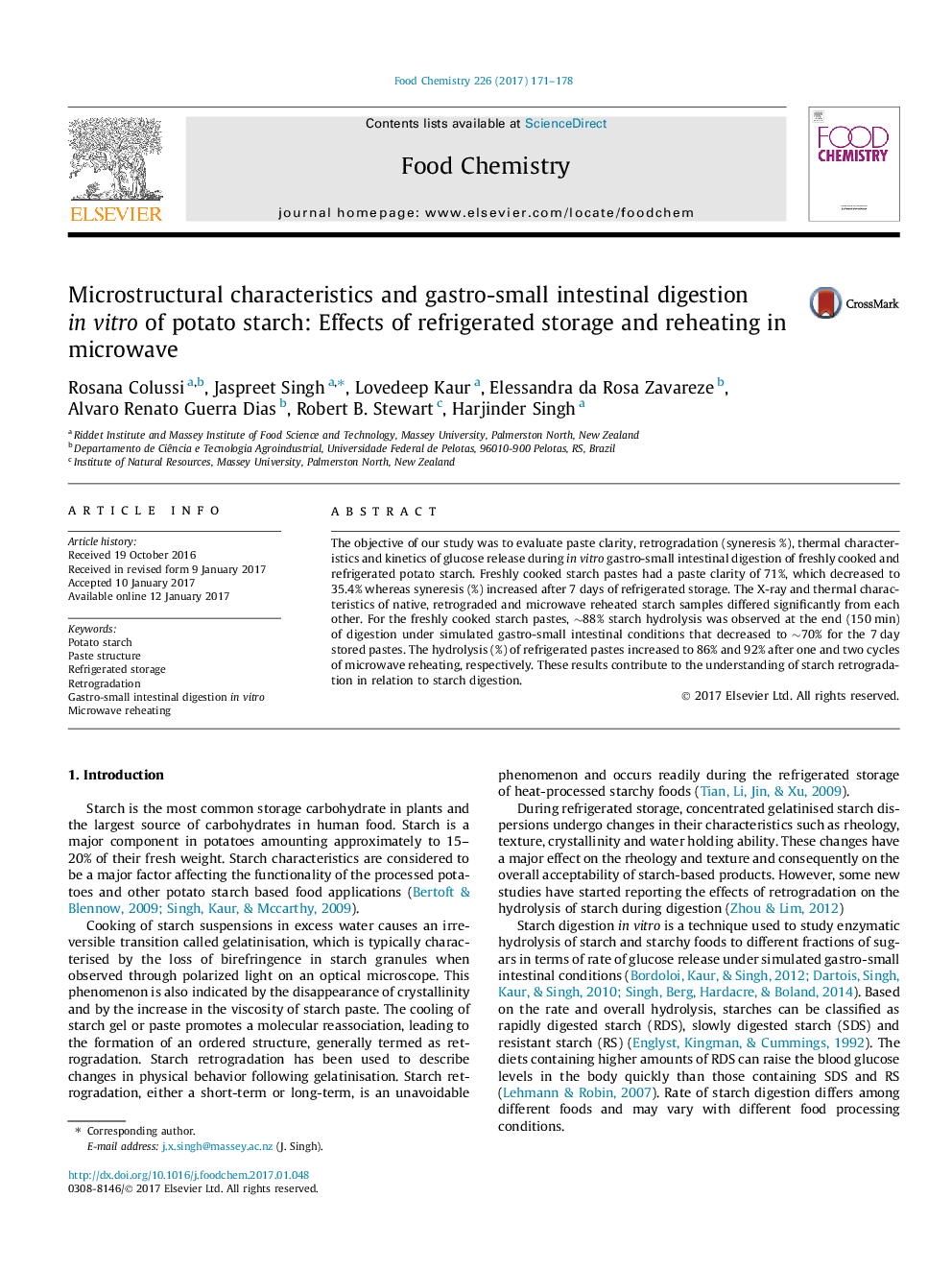| Article ID | Journal | Published Year | Pages | File Type |
|---|---|---|---|---|
| 5133500 | Food Chemistry | 2017 | 8 Pages |
â¢Refrigerated storage of cooked potato starch led to lower and slower glucose release in vitro.â¢Microstructure of refrigerated and reheated potato starch pastes differed from fresh pastes.â¢Reheating of refrigerated pastes in microwave influences the crystalline perfection in pastes.â¢Low GI features for starch based foods can be achieved by controlling refrigeration and reheating.
The objective of our study was to evaluate paste clarity, retrogradation (syneresis %), thermal characteristics and kinetics of glucose release during in vitro gastro-small intestinal digestion of freshly cooked and refrigerated potato starch. Freshly cooked starch pastes had a paste clarity of 71%, which decreased to 35.4% whereas syneresis (%) increased after 7Â days of refrigerated storage. The X-ray and thermal characteristics of native, retrograded and microwave reheated starch samples differed significantly from each other. For the freshly cooked starch pastes, â¼88% starch hydrolysis was observed at the end (150Â min) of digestion under simulated gastro-small intestinal conditions that decreased to â¼70% for the 7Â day stored pastes. The hydrolysis (%) of refrigerated pastes increased to 86% and 92% after one and two cycles of microwave reheating, respectively. These results contribute to the understanding of starch retrogradation in relation to starch digestion.
